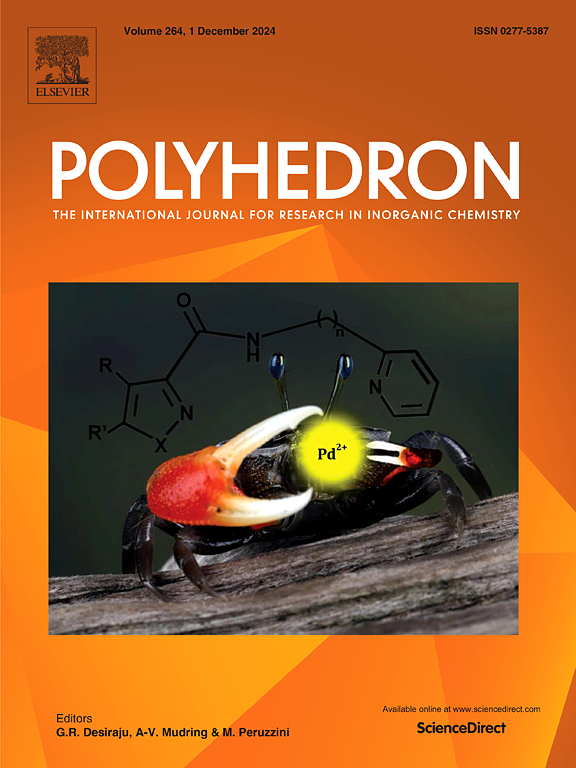A 1D coordination network built from trimeric Co(II) units: Synthesis, characterisation and gas sorption properties
IF 2.4
3区 化学
Q2 CHEMISTRY, INORGANIC & NUCLEAR
引用次数: 0
Abstract
Ligands based on bicyclo[2.2.2]oct-7-ene units have been used previously to obtain porous metal–organic materials, including 3D frameworks, 2D sheets, and discrete porous cages. The steric bulk of this unit helps to generate porosity in these materials, and so it has also been incorporated into porous organic cages for this purpose. In this contribution, we describe a new, nitro-functionalised ligand, LH2, containing this unit, which yields a 1D coordination network, 1, upon reaction with cobalt(II) acetate. The ligand itself is found to crystallise readily, and we describe its crystal structure and gas sorption measurements for uptake of N2. The coordination network 1 consists of linear, trinuclear Co(II) metal nodes that are bridged by pairs of ligands to create an intrinsic pore that is occupied by coordinated dimethylacetamide molecules (DMA). Solvent exchange and activation experiments were unsuccessful in removing DMA, but the orientation of the nitro-groups of the polymer into the space between the chains motivated CO2 sorption studies at room temperature, reaching nearly 0.5 mmol/g at 20 bar of absolute pressure.

求助全文
约1分钟内获得全文
求助全文
来源期刊

Polyhedron
化学-晶体学
CiteScore
4.90
自引率
7.70%
发文量
515
审稿时长
2 months
期刊介绍:
Polyhedron publishes original, fundamental, experimental and theoretical work of the highest quality in all the major areas of inorganic chemistry. This includes synthetic chemistry, coordination chemistry, organometallic chemistry, bioinorganic chemistry, and solid-state and materials chemistry.
Papers should be significant pieces of work, and all new compounds must be appropriately characterized. The inclusion of single-crystal X-ray structural data is strongly encouraged, but papers reporting only the X-ray structure determination of a single compound will usually not be considered. Papers on solid-state or materials chemistry will be expected to have a significant molecular chemistry component (such as the synthesis and characterization of the molecular precursors and/or a systematic study of the use of different precursors or reaction conditions) or demonstrate a cutting-edge application (for example inorganic materials for energy applications). Papers dealing only with stability constants are not considered.
 求助内容:
求助内容: 应助结果提醒方式:
应助结果提醒方式:


